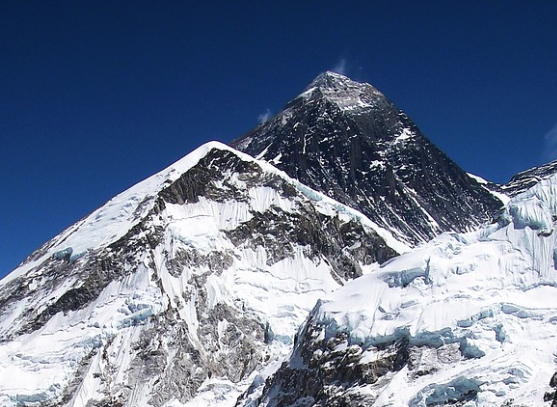
Sat,9 November 2024

The highest peak on Earth is Mount Everest, often referred to as "Sagarmatha" in Nepal and "Chomolungma" in Tibet. Mount Everest is known for its tremendous height, which is 8,848.86 meters (29,031.7 ft) above sea level, geological reasons can cause this height to change significantly.
The first climbers to successfully reach the summit were Tenzing Norgay, a Sherpa from Nepal, and Sir Edmund Hillary, a climber from New Zealand, on May 29, 1953. One of the most lauded accomplishments in mountaineering history is their illustrious expedition. Even the word Mount Everest conjures up images of adventure, difficulty, and the human spirit. It has served as a beacon for daring explorers and mountaineers, luring them into its harsh embrace where the slender atmosphere, perilous terrain, and unpredictably bad weather present great obstacles. Despite the dangers, it has also served as a symbol of human tenacity as innumerable people have attempted to reach its top and briefly stand on the roof of the globe, a feat that will permanently inscribe their names in history.
Mount Everest is not only a physical marvel but also a culturally and spiritually significant landmark for the people of Nepal and Tibet. It is revered by locals and features prominently in their folklore and traditions. The indigenous Sherpa people of Nepal have a long history of supporting mountaineering expeditions in the Everest region. They serve as guides, porters, and climbers, playing a crucial role in the success of many expeditions.
Environmental Impact
The area surrounding Mount Everest is fragile and vulnerable to environmental harm. There is a growing understanding of the necessity for sustainable practices and responsible tourism to conserve the natural beauty and biological balance of this spectacular mountain as Everest continues to face continuous environmental problems, such as glacial retreats brought on by climate change. Increased tourism and climbing activity have led to concerns about litter, waste, and the melting of glaciers due to climate change. In recent years, there has been increased scrutiny and regulation to address overcrowding, environmental concerns, and safety issues on the mountain.
Climbing Mount Everest remains a dream and a challenge for many mountaineers and adventurers from around the world. It continues to be a symbol of human determination, exploration, and the pursuit of extraordinary goals.